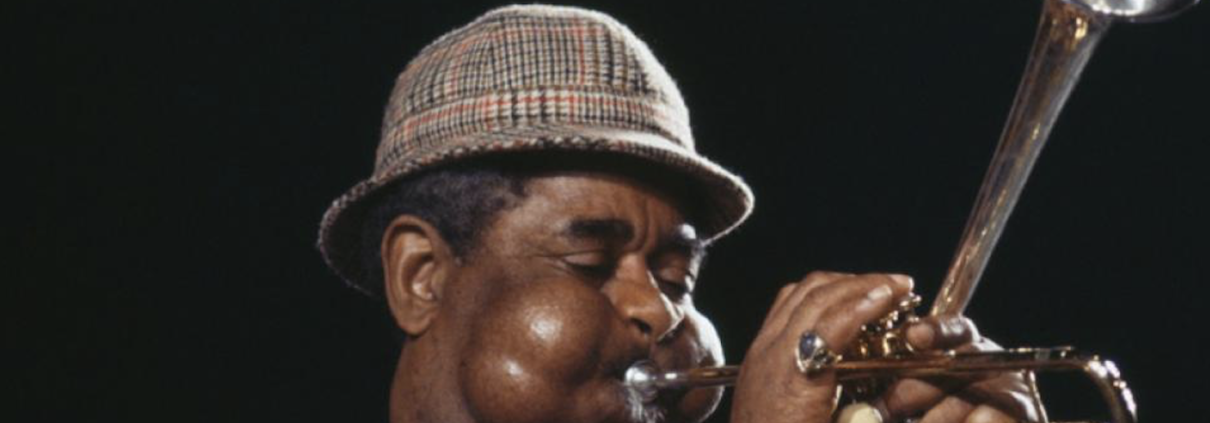Improvisation Wisdom from Dizzy Gillespie, part 1
Today, we’re diving into a nugget of wisdom straight from the legendary Dizzy Gillespie, a true icon of jazz music. In the DVD “A Night in Havana,” Dizzy shares a simple yet profoundly effective tip that can transform the way you approach improvisation. The clip is at 1:02:28 in the video which is on YouTube.
Interviewer:
What do you feel inside when you start improvising in jazz music?
Dizzy:
“The first thing you must have is a picture of what you’re supposed to do. (He referring to the chordal structure or harmony of the tune).
Then, I have the rhythm that I want to portray with this harmony, and then I put the notes of the harmony with the rhythm. I’m a rhythm man.”
I have never heard an approach to improvising that was so simple, direct, and effective! To summarize: memorize the changes, then think/feel rhythmically.
Memorize the Changes
Memorizing the chord changes is crucial. This lays the foundation for your improvisation journey. Whether you’re playing a jazz standard, a blues progression, or any other genre, having a solid grasp of the chord progression allows you to navigate through the song with confidence and creativity.
Think Rhythmically
Here’s where Dizzy’s genius shines through: he emphasizes the importance of rhythm in improvisation. He suggests envisioning the rhythm you want to convey with the harmony before even thinking about the notes. It’s like creating a rhythmic blueprint for your improvisation. By focusing on rhythm first, you infuse your improvisation with groove, energy, and dynamics. The rhythm becomes the driving force that shapes your musical narrative. It sets the stage for the notes you’ll play, adding a layer of intention and emotion to your performance.
A Universal Approach for All Musicians
Dizzy’s process is beautifully intuitive. Once you have the rhythm of your improvisation mapped out, you can seamlessly integrate the harmony and notes. This step-by-step approach ensures that your improvisation not only follows the chord changes but also dances to a rhythmic beat that captures the essence of the music.
The brilliance of Dizzy’s technique lies in its universality. Whether you’re a saxophonist, guitarist, pianist, or play any other instrument, this approach is applicable. And it’s not limited to jazz either. The rhythm-centric method works wonders across various genres, infusing your playing with a sense of vitality and authenticity.
Unlock Your Inner “Rhythm Man”
Dizzy Gillespie’s declaring himself a “rhythm man,” and his philosophy resonates strongly with his unique, infectious style. By adopting this approach, you, too, can tap into your inner rhythm virtuoso. You’ll find yourself crafting improvisations that groove, captivate, and resonate deeply with your audience. Whether you’re a seasoned improviser or just beginning your journey, this rhythmic technique is your key to unlocking the magic of improvisation.
Getting into the Rhythm Groove
When I introduced Dizzy Gillespie’s rhythm-centric method to my students, I was thrilled to witness their eagerness to dive in. We started with the foundational rhythms: whole notes, half-notes, quarter notes, eighth notes, and sixteenth notes. I emphasized that there’s no need to reinvent the rhythmic wheel—mastering these basics is the key to unlocking the magic of this approach.
It’s All About the Feel
One of the most fascinating aspects of teaching this technique was seeing my students shift from a mindset of overthinking to one of feeling. As Dizzy aptly put it, this approach is visceral, not intellectual. We practiced internalizing the rhythms until they became second nature. The students realized that it’s not about calculating when to play a specific note value, but about allowing the rhythms to flow naturally as they connect with the music.
Dizzy Gillespie’s approach liberates us from the burden of overthinking. It’s about internalizing the rhythm, letting it become a part of you, and trusting that it will naturally guide your improvisation. My students were amazed at how, by embracing this process, they effortlessly tapped into an array of rhythmic patterns that added depth and excitement to their playing.
As we journeyed through this teaching experience, my students and I learned that Dizzy Gillespie’s approach isn’t just a technique—it’s a mindset shift. It’s about embracing the rhythm, feeling it resonate within, and allowing it to guide your musical expression. Dizzy himself probably didn’t meticulously plan each note value—he felt the rhythm, and his soulful playing was a testament to the power of this approach.
The Freedom of Simplicity
In our exploration, we found that starting with the most basic harmonic structures works wonders. We chose simple tunes with uncomplicated chord progressions, like “Jambalaya.” The limited number of chords over eight bars allowed the students to fully immerse themselves in the rhythm and develop a strong rhythmic foundation. This simplicity actually unleashed their creativity, enabling them to experiment with various rhythmic variations.
A Final Note
Teaching Dizzy Gillespie’s rhythm-centric approach was a transformative experience for my students and me. We discovered that rhythm is the heartbeat of music, and when we let go of the need to intellectualize it, we unlock a world of creativity and expression. So, if you’re looking to infuse your improvisation with life and groove, take a page from Dizzy’s book and let the rhythm guide you.
Here’s to embracing the rhythms that flow through us and creating musical magic that’s as authentic as it is soulful!
—
If you want to set up a free trial lesson either in person or online, simply fill out this form and we’ll get back to you within 24 hours. You’ve got nothing to lose and an amazing musical world to gain. 🙂


